Module 16 - Introduction to Test Equipment
Pages i,
1-1,
1-11,
1-21,
2-1,
2-11,
2-21,
3-1,
3-11,
3-21,
3-31,
4-1,
4-11,
4-21,
5-1,
5-11,
5-21,
5-31,
6-1,
6-11,
6-21,
6-31,
6-41, Index
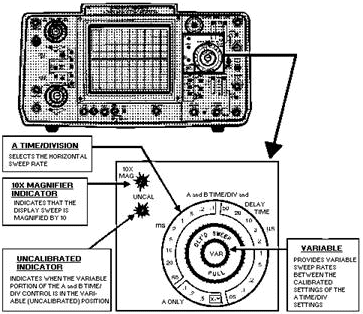
Figure 6-24. - Period time of the waveform (TIME/DIV). The potentiometer is labeled VAR, and the panel has an UNCAL indicator that lights when the VAR control
is in the variable position. When you desire to accurately measure the time of one cycle of an input signal, turn
the VAR control to the CAL position and turn the TIME/DIV switch to select an appropriate time base. Suppose you
choose the 10-microsecond position to display two cycles of an input signal, as shown in figure 6-25. One cycle
occupies 3 centimeters (small divisions) along the horizontal axis. Each cm has a value of 10 microseconds.
Therefore, the time for one cycle equals 30 microseconds (3 x 10). Recall that the frequency for a signal may be
found by using the following procedure:

6-21
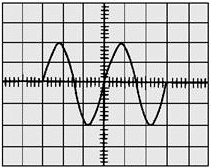
Figure 6-25. - Time measurement of a waveform (TIME/DIV). In selecting a time base, you should select one that is lower in frequency than the input signal. If the
input signal requires 5 milliseconds to complete one cycle and the sawtooth is set for 0.5 milliseconds per
centimeter with a 10-centimeter-wide graticule, then approximately one cycle will be displayed. If the time base
is set for 1 millisecond per centimeter, approximately two cycles will be displayed. If the time base is set at a
frequency higher than the input frequency, only a portion of the input signal will be displayed. In the
basic oscilloscope, the sweep generator runs continuously (FREE-RUNNING); in more elaborate oscilloscopes, it is
normally turned off. In the oscilloscope we're using as an example, the sweep generator can be triggered by the
input signal or by a signal from some other source. (Triggering will be discussed later in this chapter.) This
type of oscilloscope is called a triggered oscilloscope. The triggered oscilloscope permits more accurate time
measurements to be made and provides a more stable presentation than the nontriggered-type oscilloscope.
On some oscilloscopes, you will find a 10 times (10X) magnification control. As previously mentioned, this allows
the displayed sweep to be magnified by a factor of 10. Q-15. When you select the time base to display a
signal, should the time base be the same, higher, or lower than the input signal? COMPONENTS useD
to PROVIDE a STABLE DIsPLAY The triggering and level controls are used to synchronize the sweep
generator with the input signal. This provides a stationary waveform display. If the input signal and horizontal
sweep generator are unsynchronized, the pattern tends to jitter, making observations difficult. The a
TRIGGER controls at the lower right of the scope (figure 6-26) are used to control the stability of the
oscilloscope CRT display. They are provided to permit you to select the source, polarity, and amplitude of the
trigger signal. These controls, labeled a TRIGGER, LEVEL, SOURCE, and SLOPE, are described in the following
paragraphs.
6-22
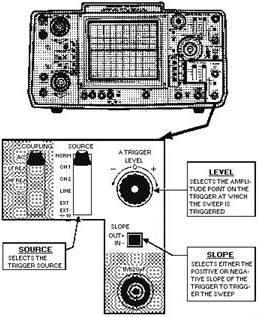
Figure 6-26. - Components that control stability. SOURCE Control The SOURCE control allows you to select the appropriate source
of triggering. You can select input signals from channel 1 or 2, the line (60 hertz), or an external input. TRIGGER LEVEL/SLOPE Controls The LEVEL control allows you to select the amplitude
point of the trigger signal at which the sweep is triggered. The SLOPE lets you select the negative or positive
slope of the trigger signal at which the sweep is triggered. The TRIGGER LEVEL (mounted with the TRIGGER
SLOPE on some scopes) determines the voltage level required to trigger the sweep. For example, in the TRIGGER
modes, the trigger is obtained from the signal to be displayed. The setting of the LEVEL control determines the
amplitude point of the input waveform that will be displayed at the start of the sweep. Figure 6-27 shows
some of the displays for a channel that can be obtained for different TRIGGER LEVEL and TRIGGER SLOPE settings.
The level is zero and the slope is positive in view A; view B also shows a zero level but a negative slope
selection. View C shows the effects of a positive trigger level setting and positive trigger slope setting; view D
displays a negative trigger level setting with a positive trigger slope setting. Views E and F have negative slope
settings. The difference is that view E has a positive trigger level setting, whereas F has a negative trigger
level setting.
6-23

Figure 6-27. - Effects of SLOPE and TRIGGER LEVEL controls. In most scopes, an automatic function of the trigger circuitry allows a free-running trace without a
trigger signal. However, when a trigger signal is applied, the circuit reverts to the triggered mode of operation
and the sweep is no longer free running. This action provides a trace when no signal is applied.
Synchronization is also used to cause a free-running condition without a trigger signal. Synchronization is not
the same as triggering. TRIGGERING refers to a specific action or event that initiates an operation. Without this
event, the operation would not occur. In the case of the triggered sweep, the sweep will not be started until a
trigger is applied. Each succeeding sweep must have a trigger before a sweep commences. SYNCHRONIZATION, however,
means that an operation or event is brought into step with a second operation. A sweep circuit that uses
synchronization instead of triggering will cause a previously free-running sweep to be locked in step with the
synchronizing signal. The TRIGGER LEVEL control setting can be increased until synchronization occurs; but, until
that time, an unstable pattern will appear on the CRT face. Coupling Section The
Coupling section allows you to select from four positions: AC, LF REJ, HF REJ, and DC. The AC position
incorporates a coupling capacitor to block any dc component. The LF and HF REJ positions reject low- and
high-frequency components, respectively. The DC position provides direct
6-24
coupling to the trigger circuits. This is useful when you wish to view only the LF or HF component of
a signal. COMPONENTS useD to SELECT SCOPE TRIGGERING The TRIG Mode section in
figure 6-28 allows for automatic triggering or normal triggering. In AUTO (automatic), the triggering will be
free-running in the absence of a proper trigger input or will trigger on the input signal at frequencies above 20
hertz. In NORM (normal), the vertical channel input will trigger the sweep.

Figure 6-28. - Components to select triggering. COMPONENTS useD to SELECT HORIZONTAL-DEFLECTION Mode For the present, notice
only that the HORIZ DIsPLAY (horizontal display) in figure 6-29 can be controlled by the TIME/DIV switch. Other
switches in this section will be explained later in this chapter.
6-25

Figure 6-29. - Components to select mode of horizontal deflection. COMPONENTS useD to CALIBRATE The PROBE of The SCOPE In figure 6-30, you can see
the components used to calibrate the test probe on the scope. a 1-volt, 2-kilohertz square wave signal is provided
for you to adjust the probe for an accurate square wave and to check the vertical gain of the scope. You adjust
the probe with a screwdriver, as shown in the figure.
6-26
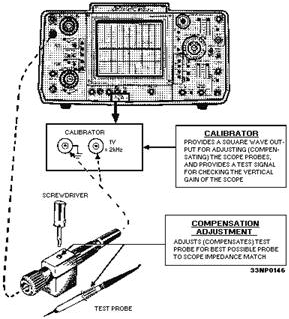
Figure 6-30. - Components to calibrate probe. SIMILARITIES AMONG OSCILLOSCOPES The oscilloscope you use may differ in some
respects from the one just covered. Controls and circuits may be identified by different names. Many of the
circuits will be designed differently. However, all the functions will be fundamentally the same. Before using an
oscilloscope, you should carefully study the operator's manual that comes with it.
USING The OSCILLOSCOPE An oscilloscope can be used for several different types of measurements, such as time, phase, frequency,
and amplitude of observed waveforms. Earlier in this chapter, you learned that the oscilloscope is most often used
to study the shapes of waveforms when the performance of equipment is being checked. The patterns on the scope are
compared with the signals that should appear at test points (according to the technical manual for the equipment
under test). You can then determine if the equipment is operating according to peak performance standards.
Q-16. Oscilloscopes are used to measure what quantities?
6-27
TurnING ON The SCOPE Before turning on the scope, make sure it is plugged
into the proper power source. This may seem obvious, but many technicians have turned all knobs on the front panel
out of adjustment before they noticed that the power cord was not plugged in. On some scopes, the Power switch is
part of the INTEN (intensity) control. Turn or pull the knob until you hear a click or a panel light comes on
(figure 6-31). Let the scope warm up for a few minutes so that voltages in all of the circuits become stabilized.
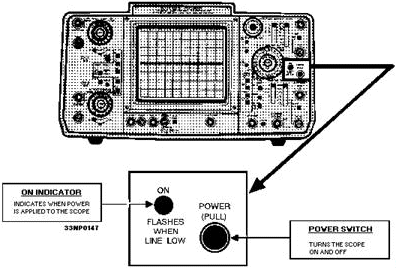
Figure 6-31. - Components to energize scope. OBTAINING a Pattern ON The SCREEN When adjusting a pattern onto the screen,
adjust the INTEN (intensity) and FOCUS controls for a bright, sharp line. If other control settings are such that
a dot instead of a line appears, turn down the intensity to prevent burning a hole in the screen coating. Because
of the different speeds at which the beam travels across the screen, brightness and sharpness will vary at various
frequency settings. For this reason, you may have to adjust the INTEN and FOCUS controls occasionally while taking
readings. NUMBER of CycleS ON The SCREEN Because distortion may exist at the
beginning and end of a sweep, it is better to place two or three cycles of the waveform on the screen instead of
just one, as shown in figure 6-32.
6-28
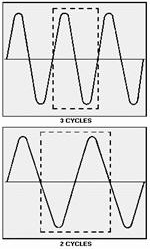
Figure 6-32. - Proper signal presentation. The center cycle of three cycles provides you with an undistorted waveform in its correct phase. The
center of a two-cycle presentation will appear inverted, but will be undistorted. To place waveforms on the CRT in
this manner, you must understand the relationship between horizontal and vertical frequencies. The relationship
between the frequencies of the waveform on the vertical plates and the sawtooth on the horizontal plates
determines the number of cycles on the screen, as shown in figure 6-33.
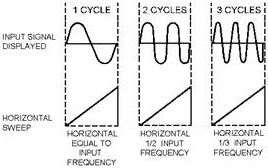
Figure 6-33. - Vertical versus horizontal relationship.
6-29
The horizontal sweep frequency of the scope should always be kept lower than, or equal to, the
waveform frequency; it should never be higher. If the sweep frequency were higher, only a portion of the waveform
would be presented on the screen. If, for example, three cycles of the waveform were to be displayed on
the screen, the sweep frequency would be set to one-third the frequency of the input signal. If the input
frequency were 12,000 hertz, the sweep frequency would be set at 4,000 hertz for a three-cycle scope presentation.
For two cycles, the sweep frequency would be set at 6,000 hertz. If a single cycle were desired, the setting would
be the same as the input frequency, 12,000 hertz. DUAL-TRACE Operation The
information presented in the previous sections served as a general overview of basic single-trace oscilloscope
operation using one channel and operating controls. Now, you will be introduced to DUAL- TRACE operation.
Dual-trace operation allows you to view two independent signal sources as a dual display on a single CRT. This
operation allows an accurate means of making amplitude, phase, time displacement, or frequency comparisons and
measurements between two signals.
a dual-trace oscilloscope should not be confused with a dual-beam oscilloscope. Dual-beam oscilloscopes produce
two separate electron beams on a single scope, which can be individually or jointly controlled. Dual-trace refers
to a single beam in a CRT that is shared by two channels. Q-17. Scopes that produce two channels on a
single CRT with a single beam are referred to as what types of scopes? Components used to Select
Vertical-Deflection Operating Mode The VERT Mode controls (figure 6-34) allow you to select the operating
mode of the scope for vertical deflection.
6-30
| - |
Matter, Energy,
and Direct Current |
| - |
Alternating Current and Transformers |
| - |
Circuit Protection, Control, and Measurement |
| - |
Electrical Conductors, Wiring Techniques,
and Schematic Reading |
| - |
Generators and Motors |
| - |
Electronic Emission, Tubes, and Power Supplies |
| - |
Solid-State Devices and Power Supplies |
| - |
Amplifiers |
| - |
Wave-Generation and Wave-Shaping Circuits |
| - |
Wave Propagation, Transmission Lines, and
Antennas |
| - |
Microwave Principles |
| - |
Modulation Principles |
| - |
Introduction to Number Systems and Logic Circuits |
| - |
- Introduction to Microelectronics |
| - |
Principles of Synchros, Servos, and Gyros |
| - |
Introduction to Test Equipment |
| - |
Radio-Frequency Communications Principles |
| - |
Radar Principles |
| - |
The Technician's Handbook, Master Glossary |
| - |
Test Methods and Practices |
| - |
Introduction to Digital Computers |
| - |
Magnetic Recording |
| - |
Introduction to Fiber Optics |
| Note: Navy Electricity and Electronics Training
Series (NEETS) content is U.S. Navy property in the public domain. |
|



















